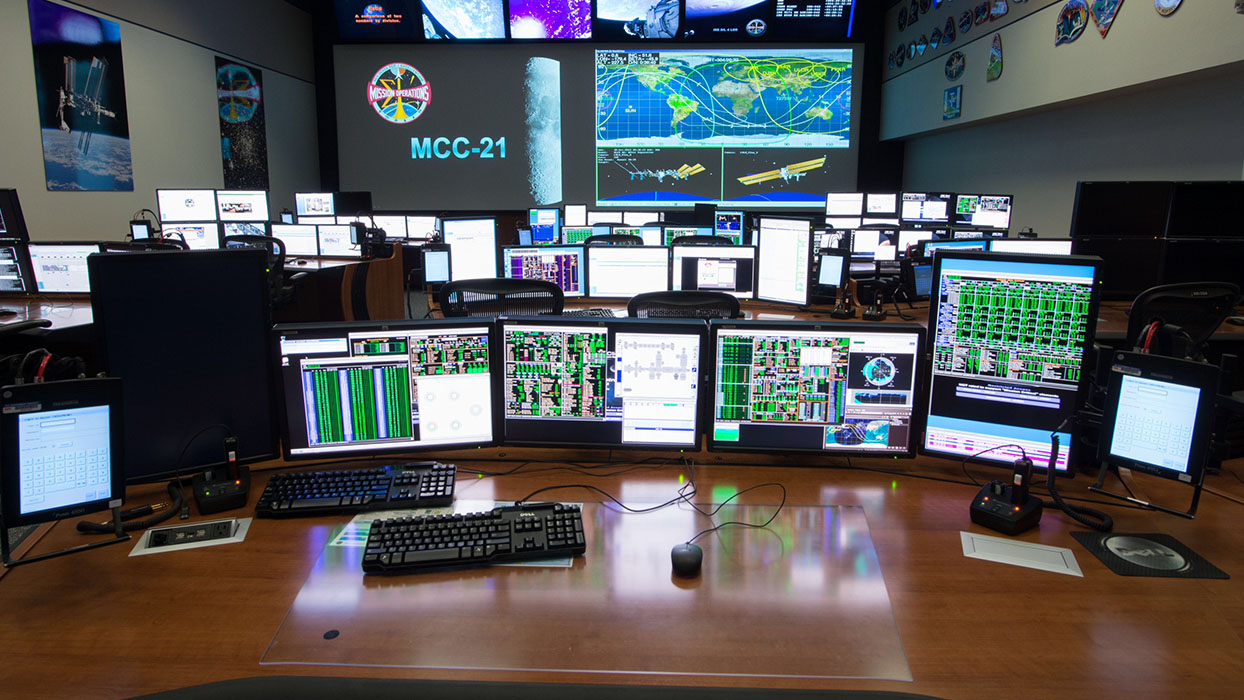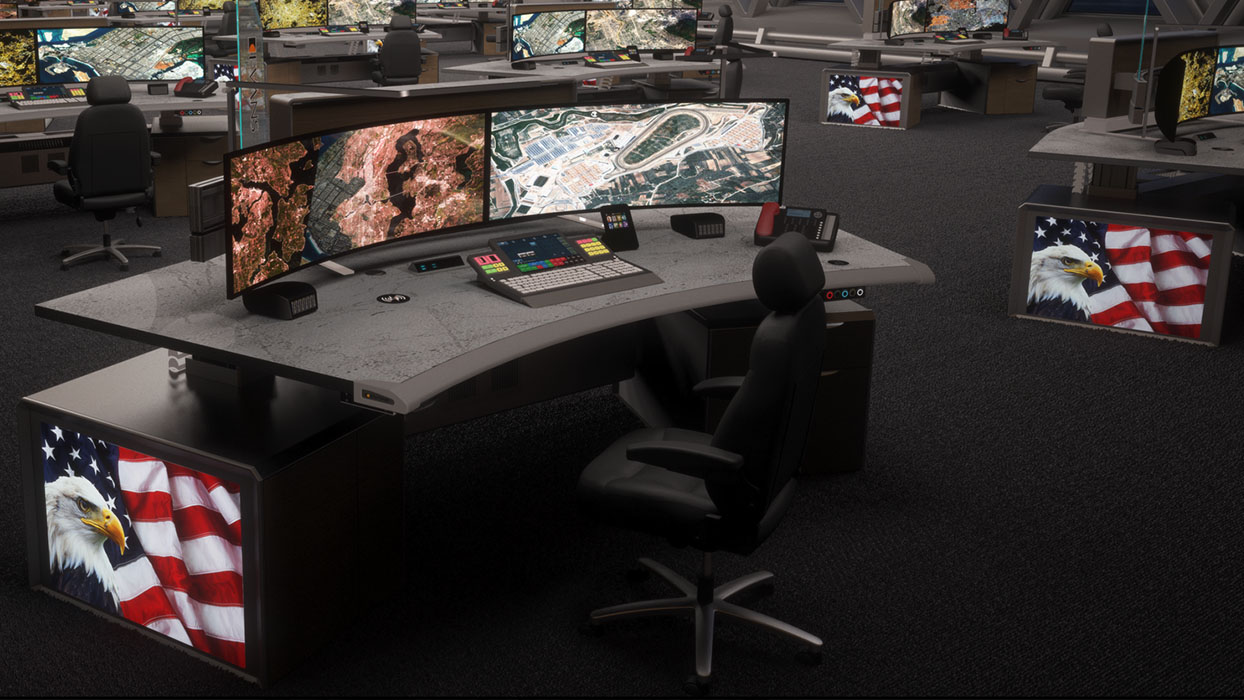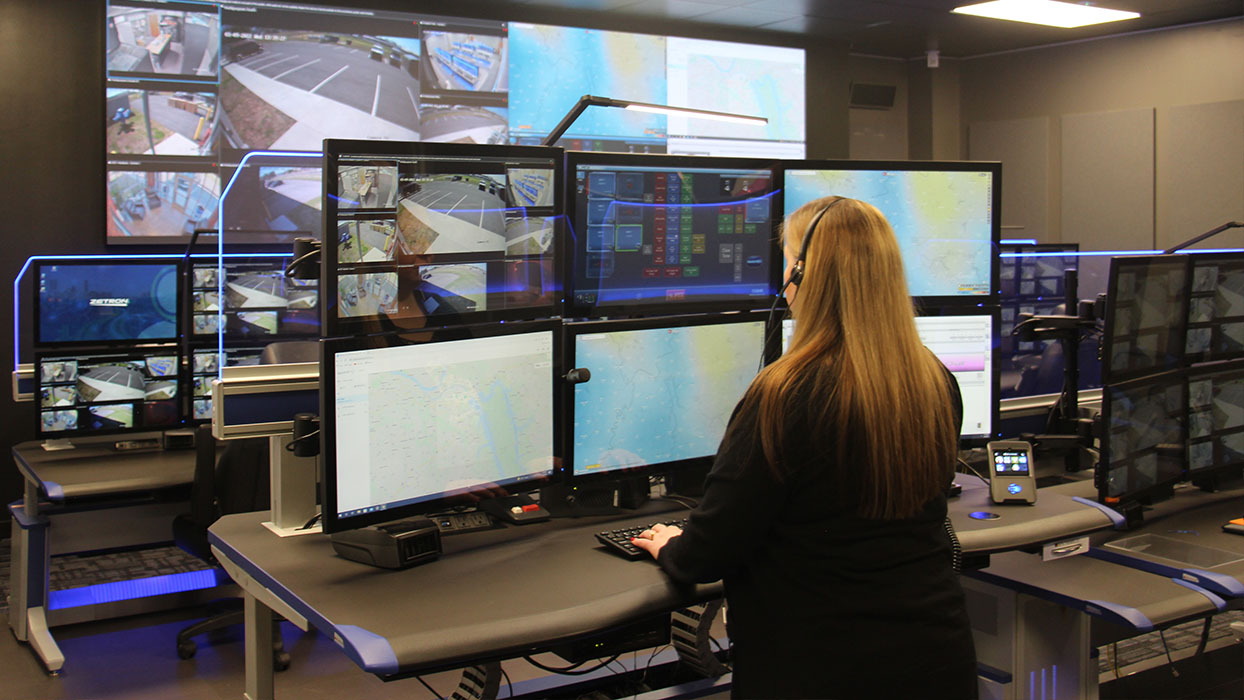Control room operators often work long shifts monitoring and actioning mission-critical information; it becomes essential that their workstations are comfortable and easy to use. A component of optimizing operator effectiveness is ensuring proper display positions to avoid eye strain, muscle fatigue, and headaches. There are best practices to address control room monitor positions and ways to optimize them for ergonomics and ease of use.
Bring in the Experts to help design your ideal control room.
Your console configuration may have 4 or 6 screens instead of just 1 or 2, but the overall advice remains almost the same. Think about how your displays are aligned and your viewing angles when working in a chair and when standing.

We get asked a lot about the optimal ergonomic monitor placement on a console for an operator. No wonder, multi-monitor configurations are tricky. Candidly, no matter what orientation or configuration you decide on, you will frequently end up compromising in one way or another.
When setting up a control room console and the monitors, it is important to consider the operator's primary viewing angle and sightlines.
A common setup is to have displays positioned side by side, parallel to each other, and centered on the console in front of the operator (illustrated below). However, this is not always the most ergonomic or optimal for productivity. The monitors tend to align with the bezels right in the middle, which means the operator turns their head to the left or right to see the different displays.
To improve ergonomics, one option is to shift one monitor straight ahead creating a primary display. This allows for a more comfortable viewing angle and reduces strain on the neck. The second monitor can be used for less critical, low-priority tasks such as email or messaging notifications.

A frequently seen configuration is to stack the monitors on top of each other. This saves desk space and looks nice, but it can be uncomfortable to look up at the top monitor for extended periods of time. For stacked displays, one option to improve ergonomics is to angle the upper display towards the operator's face. This allows for a more comfortable viewing angle and reduces strain on the neck.
The second monitor could also be used for low-priority tasks such as email or messaging notifications. This configuration is recommended for most people who want to use an ergonomic dual monitor setup, but it does take up more space on the desk and may not be as aesthetically pleasing as a side-by-side setup.
Some configurations are better for ergonomics, some for aesthetics, though most frequently multiple displays are driven by the significant amount of data required in mission-critical control rooms. It is common for control room operators to actively watch 4, 5, or 6 monitors in addition to large video wall displays with various data visualizations. What then?
A central tenet is to have a primary screen directly in your optimal field of view.
Still, operators now commonly use up to 6 monitors as shown below, this means the middle 2 are the primary displays and the outer 4 are for peripheral data. In the standing position, the operator's sightline favors the top screen, whereas when sitting the sightline will favor the bottom screen.

Marshall County utilizing the Evans E-Arm with Strategy Air Sit-Stand Consoles. Read the Full Case Study here.
How can you better deal with multiple displays and information overflow? To make it easier to manage multiple control room monitors, the E-Arm solution allow operators to adjust the position of individual monitors. This helps improve ergonomics and makes it easier to use multiple monitors in any control room setting. Each monitor can be moved independently up & down, left & right, plus forward & backward. For example, you can adjust your monitors for standing position versus sitting to your exact tastes.
View the video below to see how the Evans E-Arm moves easily forward. You can also adjust the height by moving the post against the slatwall. The only problem with the E-arm is that it can be time time-consuming to move the monitors all the time, though they are not typically moved too often. That is why we have another solution that moves all monitors at once but adds to the cost of your console setup. See the following section for more information on the Evans Unity Arm.
Learn more about the Evans E-Arm and E-Arm Piston Assist.
The Unity Arm allows operators to move all screens at once using the EnviroLinc TouchPad. Move all monitors forward, back, up, and down with the built-in electronic motor. Input programmable height and focal depth settings and adjust the height and angle of the monitor array in a countless number of configurations with the touch of a button. With the Unity Arm, the system is designed to maintain the viewing angle as it is raised or lowered and the controls are flush mounted to the work surface to avoid accidental adjustments.
Learn more about the Evans Unity Arm.
The Evans consulting and design teams are experts at finding the right fit for your specific industry and team. Not only for screen positions but for the control room as a whole. By considering all the Human Machine Interfaces of the control room and the entire environment, an Evans Control Subject Matter Expert can have a big impact on operator comfort and productivity.
Contact the Evans team to ask your questions about optimal monitor configurations and how to design your ideal control room.
Want to learn more about the entire Evans Process? When you work with us you get over 2,000 years of experience with our team. Our process helps with consulting, operational planning, control room design, turnkey construction, project management, console design, console manufacturing, installation, warranty, ongoing support, and EvansCare. Read this blog post by Jeff Fairholm for more details by clicking here:
Topics: Ergonomics
Subscribe to our blog today for expert tips, news, and insights on the control room industry.